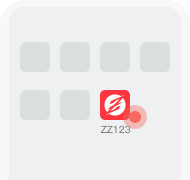
Throbbing Gristle
英国工业音乐的先锋,乐队反叛、好斗的风格使死亡、黑暗和法西斯主义在爆雷般的机械声中得以展示。他们反对旋律,支持强烈的节奏,崇尚恐怖主义。有人称呼他们为“文化海盗”——用发狂的热情实现自己的主张。 这支乐队的头目是主唱Genesis P-Orridge,他的情人Cosey Fanni Tutti是乐队吉他手,特效处理是Peter“Sleazy”Christopherson,键盘手是Chris Carter。Throbbing Gristle早期的现场表演,总是充满了委琐的话语和下流的动作,他们是在“嘲笑道德和法律”,更令人不解的是他们还在舞台上放置一个记时器,将表演时间死定在60分钟内,时间一到,他们就立刻将舞台的电源掐断。在乐队那次臭名昭著的首次公演上,主唱还用粘满血迹的棉花团和肮脏的尿布制作了一件艺术品陈列在了舞台上。 1976年乐队创建了自己的唱片品牌Industrial。同年公开发行了他们的第一张唱片《The Best of Throbbing Gristle, Vol. 2》。1977年的唱片《2nd Annual Report》仅制作了500张拷贝,后因歌迷的要求又重新再版。 1980年,P-Orridge和Christopherson组建了另外的一支乐队Psychic TV(没太长时间,Christopherson又离去组建了Coil)。Throbbing Gristle剩余的两位成员则继续他们的事业。 Throbbing Gristle乐队的影响范围很大,他们的很多单曲都很著名,如“United”、“Hamburger Lady”、“Death Threats” 等等。乐队虽然解散了,但因为他们在工业音乐方面的突出成就,乐队的影响力却一直没有减弱。80年代开始,乐队早期一系列的未发表作品相继被出版发行。
Abrasive, aggressive, and antagonistic, Britains Throbbing Gristle pioneered industrial music; exploring death, mutilation, fascism, and degradation amid a thunderous cacophony of mechanical noise, tape loops, extremist anti-melodies, and bludgeoning beats, the groups cultural terrorism — the wreckers of civilization, one tabloid called them — raised the stakes of artistic confrontation to new heights, combating all notions of commerciality and good taste with a maniacal fervor.
Formed in London in the autumn of 1975, Throbbing Gristle consisted of vocalist/ringleader Genesis P-Orridge, his then-lover, guitarist Cosey Fanni Tutti, tape manipulator Peter Sleazy Christopherson, and keyboardist Chris Carter. A performance art troupe as much as a band, their early live shows — each starting with a punch clock and running exactly 60 minutes before the power to the stage was cut — threatened obscenity laws; during their notorious premiere gig, P-Orridge even mounted an art exhibit consisting entirely of used tampons and soiled diapers.
Upon forming their own label, Industrial, the group issued their introductory release, The Best of Throbbing Gristle, Vol. 2, in 1976. A full-length debut, The Second Annual Report of Throbbing Gristle, followed in 1977, in a pressing of only 500 copies; bowing to fan demand, the record was later reissued — cut from a master tape played backward. The 1977 underground hit United marked a tiny step toward accessibility, thanks to the inclusion of a discernible rhythm. Typically, when the track reappeared on 1978s D.O.A: The Third and Final Report, it was sped up to last all of 17 seconds; no less provocative was Hamburger Lady (inspired by the story of a burn-unit victim) or Death Threats (a compilation of murderous messages left on the groups answering machine).
20 Jazz Funk Greats, a harsh electro-pop outing, followed a year later, and after 1980s live-in-the-studio Heathen Earth, Throbbing Gristle called it quits. P-Orridge and Christopherson soon formed Psychic TV (though Christopherson split again to form Coil), while the remaining duo continued on as Chris & Cosey. As Throbbing Gristles influence swelled, a seemingly endless series of posthumous releases followed, most of them taken from live dates; among the more notable were 1981s 24 Hours of Throbbing Gristle, 1983s Once Upon a Time (Live at the Lyceum), 1998s Dimensia in Excelsis, 2001s The First Annual Report of Throbbing Gristle, and 2004s Mutant TG and TG+. Throbbing Gristle reunited during the early 2000s for performances, and released Part Two: Endless Not, their first album in 25 years, in 2007.
Abrasive, aggressive, and antagonistic, Britains Throbbing Gristle pioneered industrial music; exploring death, mutilation, fascism, and degradation amid a thunderous cacophony of mechanical noise, tape loops, extremist anti-melodies, and bludgeoning beats, the groups cultural terrorism — the wreckers of civilization, one tabloid called them — raised the stakes of artistic confrontation to new heights, combating all notions of commerciality and good taste with a maniacal fervor.
Formed in London in the autumn of 1975, Throbbing Gristle consisted of vocalist/ringleader Genesis P-Orridge, his then-lover, guitarist Cosey Fanni Tutti, tape manipulator Peter Sleazy Christopherson, and keyboardist Chris Carter. A performance art troupe as much as a band, their early live shows — each starting with a punch clock and running exactly 60 minutes before the power to the stage was cut — threatened obscenity laws; during their notorious premiere gig, P-Orridge even mounted an art exhibit consisting entirely of used tampons and soiled diapers.
Upon forming their own label, Industrial, the group issued their introductory release, The Best of Throbbing Gristle, Vol. 2, in 1976. A full-length debut, The Second Annual Report of Throbbing Gristle, followed in 1977, in a pressing of only 500 copies; bowing to fan demand, the record was later reissued — cut from a master tape played backward. The 1977 underground hit United marked a tiny step toward accessibility, thanks to the inclusion of a discernible rhythm. Typically, when the track reappeared on 1978s D.O.A: The Third and Final Report, it was sped up to last all of 17 seconds; no less provocative was Hamburger Lady (inspired by the story of a burn-unit victim) or Death Threats (a compilation of murderous messages left on the groups answering machine).
20 Jazz Funk Greats, a harsh electro-pop outing, followed a year later, and after 1980s live-in-the-studio Heathen Earth, Throbbing Gristle called it quits. P-Orridge and Christopherson soon formed Psychic TV (though Christopherson split again to form Coil), while the remaining duo continued on as Chris & Cosey. As Throbbing Gristles influence swelled, a seemingly endless series of posthumous releases followed, most of them taken from live dates; among the more notable were 1981s 24 Hours of Throbbing Gristle, 1983s Once Upon a Time (Live at the Lyceum), 1998s Dimensia in Excelsis, 2001s The First Annual Report of Throbbing Gristle, and 2004s Mutant TG and TG+. Throbbing Gristle reunited during the early 2000s for performances, and released Part Two: Endless Not, their first album in 25 years, in 2007.
single




















